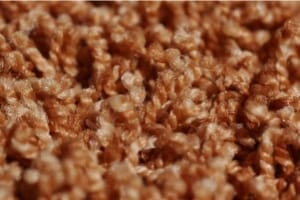Replacing carpet and fiber lifespan
By Steve Williams,
Carpet is a charming and practical form of flooring for your home. However, even with the best cleaning routines and care, the carpet will degrade in quality over time and need replacing. Depending on the fiber used to make your carpet, the lifespan will vary. This will give you an idea of the average time that different carpets will need replacing in your home.
Nylon
Nylon is exceptionally strong and one of the most popular carpet fibers. It consists of either polycaprolactam (Nylon 6) or polyhexamethylene adipamide (Nylon 6,6). Nylon carpet is an excellent choice for all types of traffic areas due to its elasticity and superior resistance to foot traffic. The filament yarns provide a soft, smooth and lightweight construction of high resilience and can be dyed in a wide range of colors. However, Nylon 6,6 is a little more challenging to dye, so there is less color choice. Nylon is usually more expensive than polyester carpets but only needs to be replaced every 12 to 15 years*.
Olefin
Olefin is a popular outdoor carpet material; however, you can utilize it indoors as well. It has a similar appearance to wool, making it a good choice for loop carpets like Berbers. Olefin is firm and elastic and makes excellent area rugs. Due to its endurance to staining, mildew and fading, it is exceptional in standing up to weather elements. Olefin fibers do not bounce back well under heavy foot traffic; hence it has a lower resilience than nylon and polyester. It is one of the least expensive carpet fibers and can stand being replaced every 3 to 5 years*.
Polyester (polyethylene terephthalate, PET)
Polyester (PET) is a popular and versatile fiber that has been used in carpets for many years. It is not as strong and pliable as nylon fibers but has better stain resistance. PET is strong, elastic and can withstand heavy foot traffic. The newest PET carpet fiber, Triexta, combines the best properties of nylon with conventional PET. Triexta has excellent elastic recovery and the resilience of nylon. Its ability to stand up to heavy foot traffic is only slightly less than PET fibers. However, Triexta is much softer than PET fibers. It has a wool-like feel and holds dye better than PET. Both PET and Triexta carpet will need replacing every 5 to 10 years*.
Acrylic (polyacrylonitrile)
Acrylic fiber is lightweight, soft and warm. It can mimic natural fibers like cotton and wool or can be a blend of both. Acrylic has good resistance to staining, mildew and fading. However, its durability is less than other synthetic carpet fibers making it not a great choice for high foot traffic. Acrylic carpet would need replacing every 3 to 5 years*.
Wool
Wool is one of the few natural fibers still used for carpet. They manufacture most synthetic fibers to mimic wool carpets. It is naturally flame-resistant and hypoallergenic. Because wool is naturally curly, it bounces back into shape easily under heavy foot traffic. Wool holds moisture more than synthetic carpet fibers, so you are only able to use dry cleaning methods – no steam cleaning. Also, wool will shrink if cleaned at a temperature above 150 degrees. However, when properly cared for, wool can last up to 20 years*.
Carpet warranties on wear, stains and texture retention (the fibers’ capability to uphold their shape) can range from 5 years to a lifetime, but most carpeting is replaced every 10 years or so. However, if the carpeting is flattened, matted, dirty looking or creating health issues, it should be replaced right away. Carpeting installed in high traffic areas like hallways, entryways and stairs will more than likely need replacing faster and more frequently than carpet installed in bedrooms or living rooms. When a carpet is no longer looking or performing its best despite professional cleaning and attempts to restore it, it is time to give us a call or visit one of our showrooms in Mokena, IL, or Highland, IN. You can book a showroom consultation online HERE or just stop in today!

